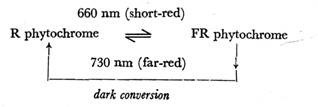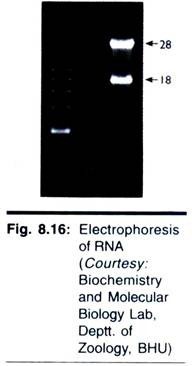ADVERTISEMENTS:
In this article we will discuss about the structure of small intestine with the help of suitable diagrams.
From outside inwards, the arrangement of the layers is same, i.e., the serous coat, the muscular coat, composed of outer longitudinal and inner circular, the submucous coat the layer of muscularis mucosae consisting of outer longitudinal and inner circular layers and lastly the mucous membrane.
The mucous membrane consists of the following three characteristic features:
ADVERTISEMENTS:
1. The Simple Tubular Glands:
The simple tubular glands lined by columnar epithelium secrete intestinal juice through the openings between the villi, known as the crypts of Lieberkuhn. In much of the small intestine, especially in the jejunum, the mucosa is thrown into the circular folds, called folds of Kerckring (Fig. 9.22).
These folds encircle the lumen and serve to increase the surface area of the lumen.
ADVERTISEMENTS:
2. The Villus:
The villus is a slender finger-like fold of the mucous membrane projecting outward from the surface. The surface of the mucous membrane is covered with numerous such projections and the structures of villi in the different parts of the small intestine are leaf-shaped in the duodenum, rounded in the jejunum and club-shaped in the ileum.
The function of the villi is to absorb the different foodstuffs. Their number is about 20 – 40 per sq. mm. In the jejunum the number is less; in the ileum more. Hence, the chief function of jejunum is secretion, while that of ileum, absorption. Each villus consists, at its centre, of a blind lymph vessel called the lacteal. It contains a milky fluid rich in fat, hence the name. Outside the lacteal is the loose highly vascular submucous coat.
Then comes the superficial mucous layer which is composed of tall columnar epithelial cells and few goblet cells (Fig. 9.23). The free end of each columnar cell, next to the lumen of the intestine, has a specialised cuticular border, resembling the brush border of certain renal tubular cells. The brush border of the surface epithelial cells of the villi is composed of microvilli of about 1 µ in length and 0.1 µ in width. The filaments of plain muscles, derived from muscularis mucosae, remain attached to the submucous coat of the villus all-round the lacteal. The movements of the villi are due to the contraction of these muscular strips.
3. Lymphoid Tissue:
This is another characteristic feature of the mucous membrane. The lymphoid tissue may remain in single isolated forms or in the form of aggregated islands, especially in the ileum, known as Peyer’s patches.
Here and there among the columnar absorbing cells, are goblet cells that secrete mucus? Specialised cells which have the property of reducing ammoniancal silver to metallic silver are called argentaffin (Kulchitsky) cells. The cells are found mostly near the base of straight tubular intestinal glands or crypts of Lieberkuhn.
The cells are low columnar in shape with nuclei which are larger and clearer than those of neighbouring cells. The cytoplasm contains granules which are always infranuclear in position. Other cells with a large acidophilc nucleus known as Paneth cells are found only in the small intestine at the base of crypts of Lieberkuhn and are possibly concerned with the secretion of protein. In addition, there are also found granular argyrophil cells.
ADVERTISEMENTS:
In the duodenum, in addition to these general features, certain glands are present in the submucous coat under the muscularis mucosae. These glands open on the surface of the mucous membrane and are called duodenal digestive (Brunner’s) glands.


